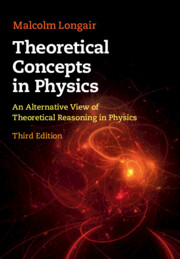Book contents
- Frontmatter
- Dedication
- Contents
- Preface and Acknowledgements
- 1 Introduction
- Case Study I The Origins of Newton’s Laws of Motion and of Gravity
- Case Study II Maxwell’s Equations
- Case Study III Mechanics and Dynamics: Linear and Non-linear
- Case Study IV Thermodynamics and Statistical Physics
- Case Study V The Origins of the Concepts of Quantisation and Quanta
- Case Study VI Special and General Relativity
- Case Study VII Cosmology and Physics
- 20 Cosmology
- 21 Dark Matter, Dark Energy and the Inflationary Paradigm
- Author Index
- Subject Index
20 - Cosmology
from Case Study VII - Cosmology and Physics
Published online by Cambridge University Press: 27 March 2020
- Frontmatter
- Dedication
- Contents
- Preface and Acknowledgements
- 1 Introduction
- Case Study I The Origins of Newton’s Laws of Motion and of Gravity
- Case Study II Maxwell’s Equations
- Case Study III Mechanics and Dynamics: Linear and Non-linear
- Case Study IV Thermodynamics and Statistical Physics
- Case Study V The Origins of the Concepts of Quantisation and Quanta
- Case Study VI Special and General Relativity
- Case Study VII Cosmology and Physics
- 20 Cosmology
- 21 Dark Matter, Dark Energy and the Inflationary Paradigm
- Author Index
- Subject Index
Summary
With the development of general relativity, Einstein realised that he had a theory which for the first time could be used to create fully self-consistent cosmological models. In 1917, he introduced the cosmological constant to create a static closed Universe.The standard world models were discovered by Friedman in 1922 and 1924 and rediscovered by Lemaitre a few years later. The expansion of the Universe was discovered by Hubble in 1929. A key discovery was that of the cosmic microwave background radiation by Penzias and Wilson in 1965. The resulting hot big bang scenario for the large-scale structure and evolution of the Universe became the preferred cosmological model. With the development of precision cosmology through precise measurements of the cosmic microwave background radiation, it was established that the cosmological constant has a finite value and that the Universe is geometrically flat.
Keywords
- Type
- Chapter
- Information
- Theoretical Concepts in PhysicsAn Alternative View of Theoretical Reasoning in Physics, pp. 527 - 573Publisher: Cambridge University PressPrint publication year: 2020

